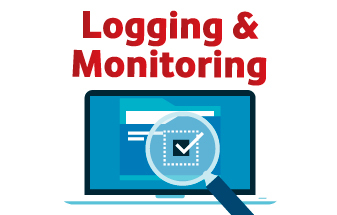
In today’s interconnected world, where online threats have become increasingly prevalent and sophisticated, organisations worldwide are constantly grappling with the challenge of ensuring robust security measures. One crucial aspect of this endeavour lies in the effective implementation of security logging and monitoring practices. However, failures in security logging and monitoring can have severe consequences, jeopardizing the confidentiality, integrity, and availability of sensitive information, as well as impeding timely incident response. This article aims to provide a detailed overview of security logging and monitoring failures OWASP (Open Web Application Security Project).
What Is Security Logging And Monitoring?
Security logging and monitoring serve as critical components in the prevention, detection, and response to security breaches. By actively monitoring and logging relevant security events, organizations can identify and investigate potential threats, ensure compliance with regulatory requirements, and establish a record of evidence for auditing and forensic purposes.
Security Logging And Monitoring Failures Real Life Examples
Despite its importance, security logging and monitoring often suffer from various failures that undermine their effectiveness. Some commonly observed failures include:
Insufficient Log Generation
One common failure is the inadequate generation of logs or the lack of enabling necessary logging functionalities altogether. Failing to generate appropriate logs prevents organizations from gaining insights into system activities, vulnerabilities, and potential threats.
Limited Logging Coverage
Organizations sometimes fail to capture logs comprehensively, leaving crucial areas of their infrastructure unmonitored. This limited coverage can enable attackers to exploit blind spots, avoiding detection and increasing the chances of a successful breach.
Ineffective Log Aggregation and Storage
When logs are generated, organisations may struggle with their aggregation and storage. Logs scattered across different systems or not collected centrally can hinder real-time analysis and correlation of security events. Moreover, inadequate storage capacity or retention policies may lead to the loss of valuable log data essential for investigating incidents and identifying attack patterns.
Neglected Log Analysis and Alerting
Security logs that are not actively analyzed promptly waste their potential value. Organizations failing to implement an effective monitoring system to analyze logs and generate alerts based on predefined thresholds or anomalies risk missing critical security incidents and lengthening response times.
Lack of Integration with Incident Response
Failure to integrate security log analysis with an organization’s incident response processes can result in delayed or inefficient response actions. Timely correlation of events and logs is vital for the efficient detection and containment of cyber threats.
Inadequate Monitoring of Third-party Services
Organizations relying on third-party services must ensure these entities have proper security logging and monitoring capabilities in place. However, inadequate oversight or reliance on the provider’s claims can lead to security gaps and the inability to detect attacks targeting third-party systems.
Consequences of Security Logging and Monitoring Failures OWASP

The repercussions of ineffective security logging and monitoring can be severe. Organizations failing to address these failures may experience prolonged undetected compromises, stolen intellectual property, unauthorized access to sensitive data, compliance breaches, reputational damage, and financial losses due to regulatory fines or legal consequences.
Mitigating Security Logging and Monitoring Failures OWASP
While security logging and monitoring failures can pose significant risks, implementing appropriate countermeasures can help organizations overcome these challenges. Some potential mitigation strategies include:
Logging and Monitoring Plan
Develop a comprehensive logging and monitoring plan encompassing the organization’s specific security requirements, including system logs, network logs, and application logs. Clearly define log retention policies and regularly review and update them based on evolving threats and compliance regulations.
Centralized Log Management
Establish a centralized log management system that consolidates logs from various systems and components, enabling efficient analysis, correlation, and detection of potential security incidents across the IT infrastructure.
Automated Event Correlation
Implement event correlation mechanisms that leverage advanced analytics and machine learning algorithms to identify patterns and anomalies indicative of potential security breaches or attacks. This enhances proactive threat detection capabilities.
Real-time Monitoring and Alerting
Deploy real-time monitoring solutions that continuously scrutinize log data for security events, triggering immediate alerts to the appropriate personnel or automated response systems. This ensures rapid incident response, minimizing potential damages.
Secure Log Storage
Utilize secure and resilient log storage solutions, such as encrypted filesystems or off-site backups, to protect log data from unauthorized tampering or deletion.
Regular Log Analysis
Conduct thorough log analysis exercises to identify recurring threats, patterns, or indicators of compromise, enabling the organization to proactively enhance security controls, update threat models, and fortify defences.
Given the ever-evolving threat landscape, security logging and monitoring play a critical role in safeguarding an organization’s assets and information. Understanding the common failures in this domain is crucial to ensure robust and proactive security measures. By following best practices and addressing logging and monitoring failures, organizations can significantly enhance their ability to detect, respond to, and mitigate potential security breaches and threats.
